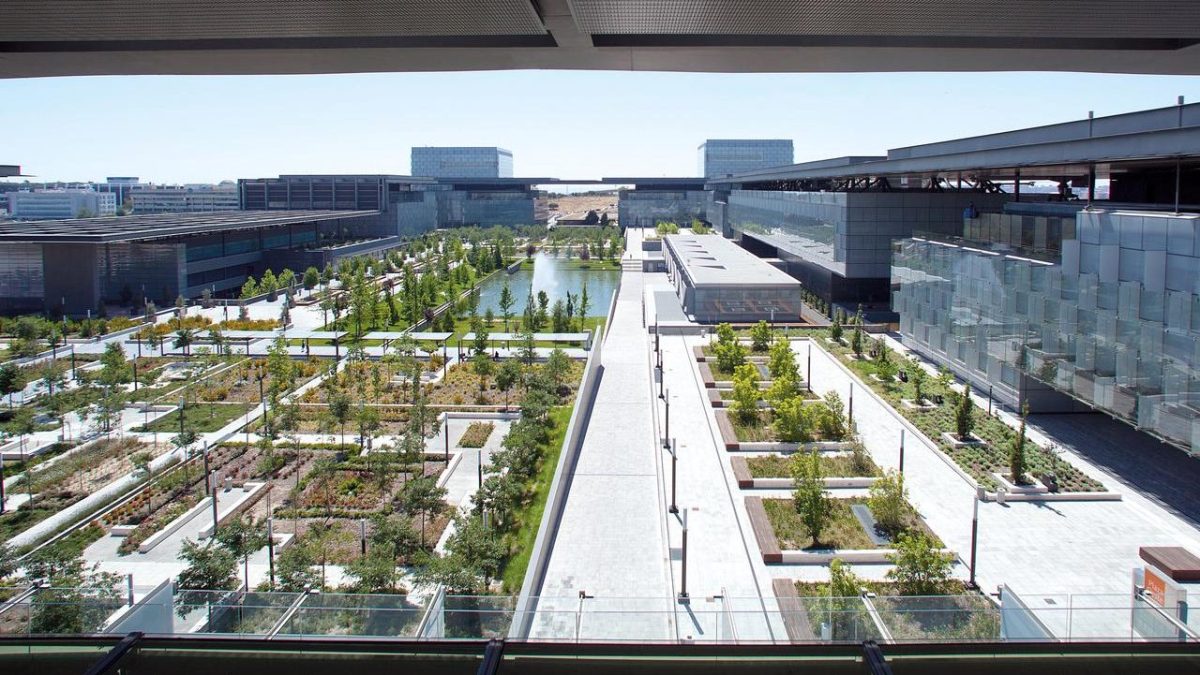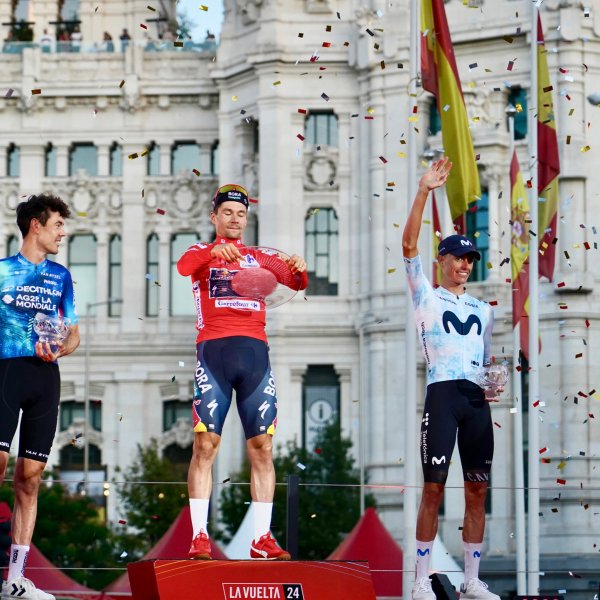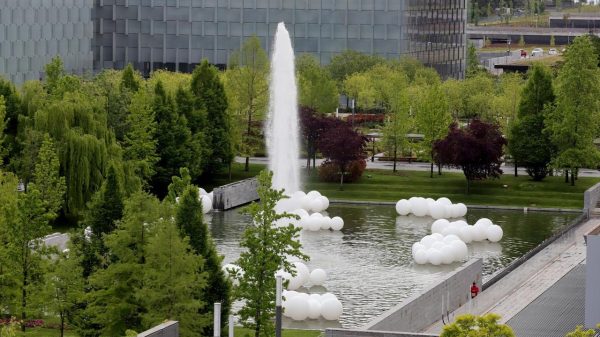Some of us are very lucky, we work at Telefónica, in Madrid and in a privileged location. We started our visits to the different gardens in the central area of the pond between the East and South squares.
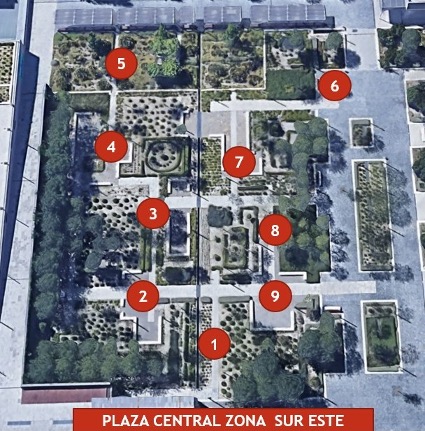
The walk begins in the area of the caños de Este. All the trees (except those indicated) that we can find on this zigzagging path are specimens of hackberry (Celtis australis).
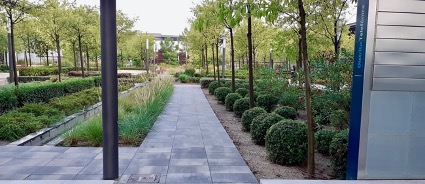
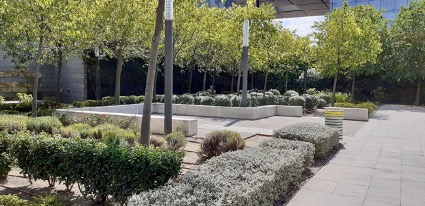
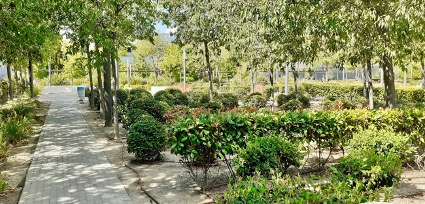
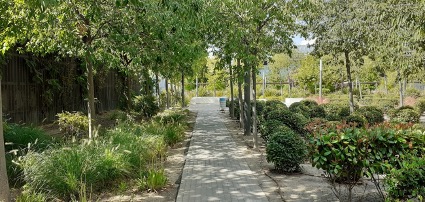
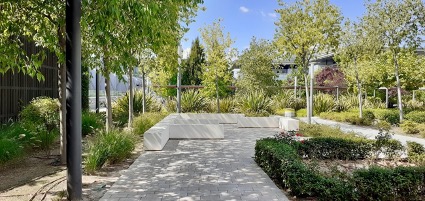
Before starting to walk along the corridor, if we look to the left and almost next to the wall, there are Hydrangea (Hydrangea macrophylla) bushes. We enter the corridor with an area of Foxtail (Pennisetum sp.) on our left and behind the water channel we can see Cotoneaster (Cotoneaster horizontalis).
We turn to our left and we have areas of Olivilla (Teucrium fruticans) and Lavender (Lavandula officinalis). In the area next to the wall there are Roses (Rosa sp.), Ivy (Hedera helix) and Wisteria (Wisteria sinensis).
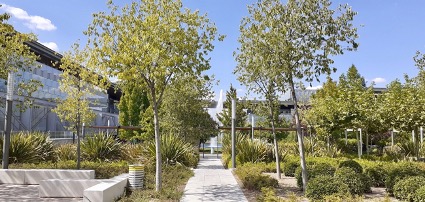
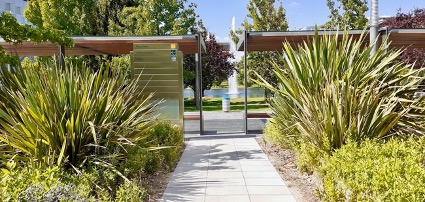
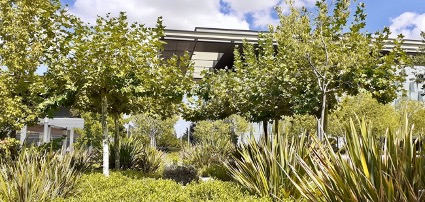
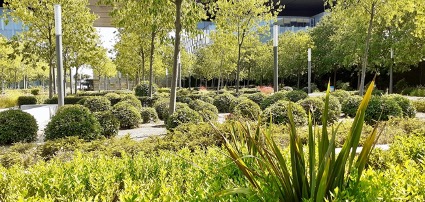
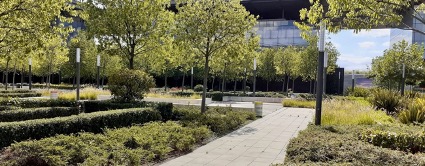
We almost reach the wall and turn right along the corridor. On our left we continue to see Foxtail (Pennisetum sp.), some Sacred Bamboo (Nandina domestica) and Rosebush (Rosa sp.). On the right we see a large area with Red Robin Photinia (Photinia x fraseri) and Gaura (Oenothera lindheimeri).
Before going down the steps you can see a circular area of Red Robin Photinia (Photinia x fraseri) next to an area of Durillo (Viburnum tinus). If we look to the right before going down the steps we can see an area of Shade Plantain (Platanus hybrida) between New Zealand Flax (Phormiun tenax) and Dwarf Bamboo (Pleioblastus sp.).
We go out into the pond corridor and walk close to the covered area. As we advance to the right we can see areas of Dwarf Bamboo (Pleioblastus sp.), Lavender (Lavandula officinalis) and next to the monolith Grevillea (Grevillea juniperina).
When we reach the end, we turn right again to find areas of Olivilla (Teucrium fruticans) and Cotoneaster (Cotoneaster horizontalis).
Already in the small square we find areas of Feathertail, Foxtail (Pennisetum sp.), Rosebush (Rosa sp.) behind the bench and Cotoneaster (Cotoneaster horizontalis).
We reach the next fork and continue to the left where we can see an area of Rosemary (Rosmarinus officinalis) and Cotoneaster (Cotoneaster horizontalis) with Red Robin Photinia (Photinia x fraseri). Towards the end we come across an area of Teucrium (Teucriun fruticans) and within the perimeter some Red Robin Photinia (Photinia x fraseri).
We go back to where we started the walk and from this perspective we can see Oleander (Nerium oleander), Cotoneaster (Cotoneaster horizontalis), Durillo (Viburnum tinus) and Escalonia (Escallonia floribunda).
